Trevor Noah: “Ask Yourself This Question.”
30 Saturday May 2020
Posted in Articles & Books of Interest, The Outer Loop
30 Saturday May 2020
Posted in Articles & Books of Interest, The Outer Loop
28 Thursday May 2020
Posted in Articles & Books of Interest, The Outer Loop
Tags
Deepa Seetharaman, Facebook, Goodbye Facebook, Jeff Horwitz, Seattle Times, Social Media Diviseness, Wall Street Journal, WSJ
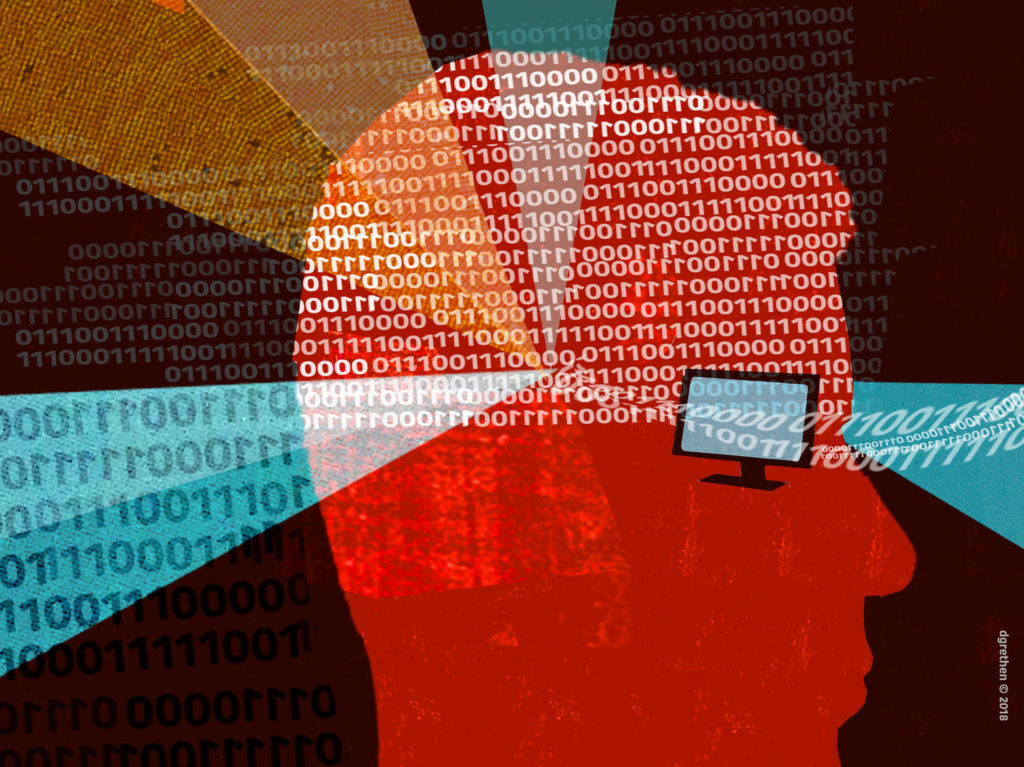
Readers of MillersTime may know that in January I stopped using Facebook. There were a number of reasons (see Goodbye Facebook), but an important one for me was my belief that FB was adding to the divisiveness in our country, in part because they could continue to build market share and make money from its usage.
A couple of days ago the Wall Street Journal posted an article that addressed this issue. The article began:
A Facebook team had a blunt message for senior executives. The company’s algorithms weren’t bringing people together. They were driving people apart.
“Our algorithms exploit the human brain’s attraction to divisiveness,” read a slide from a 2018 presentation. “If left unchecked,” it warned, Facebook would feed users “more and more divisive content in an effort to gain user attention & increase time on the platform.”
That presentation went to the heart of a question dogging Facebook almost since its founding: Does its platform aggravate polarization and tribal behavior?
The answer it found, in some cases, was yes.
If this issue and analysis interests you, read the WSJ’s entire analysis:
Facebook Executives Shut Down Efforts to Make the Site Less Divisive by Jeff Horwitz & Deepa Seetharaman, May 26, 2020, WSJ.
27 Wednesday May 2020
Posted in Escapes and Pleasures
Tags
"Books Most Enjoyed By MillersTime Readers", Favorite Books, Favorite Reads, Fiction, Nonfiction, Reading in a Time of Isolation
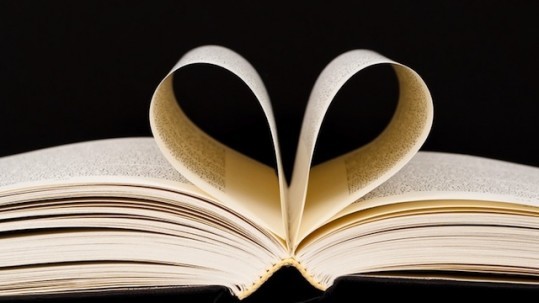
Here’s the second round of books recently enjoyed by readers of MillersTime. The first one was Favorite Reads in a Time of Self-Isolation – April 10, 2020.
Fifty of you responded this time, including our Senior Contributor who is 98 years of age, and you were divided almost equally between males and females. Nonfiction slightly outpaced fiction (49-43).
We’ll do this one more time at the end of the summer; so keep a record of your favorite reads in June, July, and August. Also, there was interest from enough of you in rereading at least one book from your past. I’ll proceed with that as a separate project/post and send a few guidelines shortly.
Mostly, however, I appreciate all of you who responded and sent in contributions, and I thank each of you for participating.
Contributors are listed alphabetically by first names.
Anita Rechler:
Paladin by David Ignatius (F). Absorbing page turner spy novel. Frightening but at least not about a biological virus. Added bonus: watch interview with Ignatius here and And this replay of interview by Ignatius of Barton Gellman who has written a book about his journalistic reporting of Snowden.
Barbara Friedman:
The Island of Sea Women: A Novel by Lisa See (F). Another wonderful book by Lisa See about the Haenyeo, a female diving/fishing community on the Korean island of Jeju and interwoven with a long-term relationship between two friends over several decades. On this island the women earn the money while the men tend to the children. The novel covers the time period starting with the Japanese occupation of Korea during WWII through the US occupation after WWII and the division of Korea into two countries and into the period when Koreans once again rule the country and what transpires for the inhabitants of Jeju. What holds the novel together over this long period, however, are the two women, Young-Sook and Mi-ja who are life-long “friends.”
The Rationing: A Novel by Charles Wheelan (F). A HOOT of a novel and published a year ago, it is about a pandemic in the US in the mid-2020’s, how the NIH and other medical professionals worked to understand the Capellaviridae pandemic and how it was caused. (Sound familiar?) From the beginning, they knew the drug Dormigen could cure the sick patient, but it was in short supply in the US, and other countries had an excess of supply but wouldn’t send it to the US in case they needed it. The politics – both international and within the US and its parties — ring so true for what we are seeing with COVID-19. The book is a bit long, but in today’s real pandemic, a HOOT is worth it!
Ben Shute:
These Truths by Jill Lepore (NF). Still working my way through it – it’s long and for some reason my reading time seems limited – but it’s the history of our country that we need now, and she writes engagingly. I’m rapidly becoming a Jill Lepore groupie – I don’t know where she gets the time (professor of History at Harvard, New Yorker staff writer, and now even a podcast!).
Maid by Stephanie Land (NF) – at a time when we’re understanding “essential workers” in new ways, and discovering all the tears in the safety net, this account of the life and struggles of a “cleaning lady” is sobering.
Bill Plitt:
I completed Where the Crawdads Sing by Delia Owens (F) this past week and enjoyed it from cover to cover, as it describe an area where we had a family farm, so I knew some of the types of folks in the region growing up on summers there.
I am reading Larry Cuban’s new book, and probably his last Chasing Success Chasing Success and Confronting Failure in American Public Schools (NF).
Bina Shah:
Pachinko by Min Jin Lee (F).
The Far Field by Madhuri Vijay (F)
Bob Thurston:
The Eleventh Man by Ivan Doig (F) takes you into the war experiences of football teammates, dispersed around the globe with the breakout of WWII. Ben Reinking is pulled out of pilot training and assigned to write about each of his buddies, thereby providing “hero” fodder for the war propaganda machine. The novel raises agonizing problems—Ben’s simmering resentment of the team’s bullying coach, and of the smarmy newsman Ben suspects of dreaming up this whole propaganda project; questions like what is heroism, or bravery, after all; a hot love affair with troubling issues— and Doig treats these issues adroitly without providing any easy answers.
White Lies (NF) – aired as a 7-part series on WAMU (NPR) that focused on the murder of Rev. James Reeb in Selma, 1965—caught my attention because Reeb had been an assistant minister at All Souls Unitarian Church that we belong to. Two journalists went to Selma to learn what they could, and the series shares their process, interviews, and findings—amazingly (and maybe because they were from Alabama) they got folks to say things they had kept secret for all these years. You learn not only about the racial issues in that place and time, but also much about the nature of perception and the deep-rootedness of beliefs – available as a podcast and worth hearing!
Carrie Trauth:
My first recommendation is Born a Crime by Trevor Noah (NF). This is a true story of his growing up in Africa. He is a wonderful comedian
Second book is Hidden Valley Road: Inside the Mind of an American Family by Robert Kolker (NF). True story of a family where six of the 12 children were diagnosed with Schizophrenia, and is interspersed in a very readable way with research which has done on that terrible disease.
Chris Boutourline:
The Spy and the Traitor: The Greatest Espionage Story of the Cold War by Ben Macintyre (NF) is the story of Oleg Gordievsky, the son of two KGB employees who follows his older brother, a KGB operative, into the fold. Oleg’s exposure to Western ideas and values which, ironically, he was exposed to while working for the KGB out of a foreign embassy, leads him to betray the motherland in the hope of bettering his own life and those of his countrymen. It’s an account that kept me interested throughout and informed me of Russia’s attempts at foreign manipulation, countered by Western efforts, all of which began earlier than I was aware of.
Cindy Olmstead:
Know My Name by Chanel Miller (NF). This is her journey after being sexually abused by a Stanford Univ student. I listened on Audible as she reads the narrative. It is extremely poignant and shows how the victim (in 2016) is still viewed as guilty. Chanel does an excellent yet laborious job of sharing her struggle to find her voice, ultimately being able to get the legal system to change.
We Were The Lucky Ones by Georgia Hunter (NF). The author traces her Jewish family’s horrific saga living in Poland during Hitler’s reign. She weaves the lives of the siblings together even when they had not heard from each other for several years. A moving story.
David Stang:
While reading Our Wild Calling: How Connecting with Animals Can Transform Our Lives – and Save Theirs by Richard Louv (NF) the subject matter of which I am quite interested in but found the book although fine on breadth, rather weak on depth
I came across Louv’s very positive comments about Jay Griffiths’ book WILD: An Elemental Journey (NF). In WILD she breaks down the planet into Wild Earth, Wild Ice, Wild Water, Wild Fire, Wild Air, and Wild Mind. Jay traveled to and reported on abused wild peoples all over the globe who she got to know through lengthy multi-week visits in highly primitive living conditions located outside of normal “civilization.” Jay, an English writer, lived with Amazon River basin shamans in their huts by beginning each day drinking ayahuasca. She also resided with Eskimos near the Canadian North Pole; Pygmies in the Calamari Desert, tribal people still using bows and arrows in Papua; Aborigines in Australia and a multitude of other peoples and places. Her impressive reporting was superbly supplemented by detail references quoted from the books in her huge bibliography. Clearly a wild woman herself, Jay’s identification with the wild people she describes is made clear by her ranting style of writing and by her photograph on the dust jacket in which looks like she might be bipolar.
Diana Bunday:
I just finished Rabbit At Rest byJohn Updike (F). I like the way he writes.
I also reread Atonement by Ian McEwan (F). I like the way he writes also.
Dixon Butler:
People of the Book by Geraldine Brooks (F). This is historical fiction, filling in events in the story of the Sarajevo Haggadah – a real 500 year old, beautifully illustrated book that has managed to survive the Spanish Inquisition, the Nazis, and the Serb attacks on Bosnia. It is really a series of inventive short stories cleverly told and held together by their relation to the book, and the book conservator hired to stabilize the manuscript . I found it totally engaging.
Ed Scholl:
Buzz Saw: The Improbable Story of How the Washington Nationals Won the World Series by Jesse Dougherty (NF). Baseball fans, and Nationals fans in particular, will much enjoy this recounting of last year’s historic postseason run by the Nationals. The author was the beat writer for the Washington Post and covered the Nationals throughout the season. The book is more than a game-by-game recap of the postseason; it has lots of very interesting back stories that give the read insight into the personalities and chemistry of the ball club.
The Guardians by John Grisham (F). This is another legal thriller by the master of the genre. It takes place in a small Florida town where a young black man is convicted of murdering a young lawyer. Guardian Ministries (which has a lot of similarities to Bryan Stevenson’s Equal Justice Initiative) takes on legal representation for the accused when they become convinced he was wrongfully convicted and forgotten by the system.
Elaine Samet:
Mary Wollstonecraft by Eleanor Flexner (NF), a biography, not about the author of “Frankenstein”, but her mother, who was a late eighteen century feminist in England. It is overly researched and academic to make for easy reading, but her life was so unusual for the time that it is worth the effort.
The Unbearable Lightness of Being by Milan Kundera (F). A highly acclaimed Czechoslovak author skillfully uses wit, philosophy, politics, passion in magnificent prose sometimes ordering on poetry to tell a complex story.
Elizabeth (Goodman) Lewis:
Blindness by Jose Saramago (F): Did I say fiction? It sure reads like it’s real. But actually it’s an allegory of what happens in a country when all the inhabitants become blind. Written in the 1990s by this Nobel Prize winner, Blindness narrates the worst-case scenario of a pandemic.
The Library Book by Susan Orlean (NF): With a thesis that, “in a library, (you) can live forever,” this book details the great fire of LA Public Library, its history, and its role in the city. Along the way, the author brings the characters that people the library to life and exposes the difficulty of proving the crime of arson.
Ellen Kessler:
Stan (husband) reads like a gourmet, and I think I read like a garbage disposer–putting it all in and then starting again.
I am almost finished Armando Correa’s The Daughter’s Tale (F) about a WWII Jewish German family and in another way, presents a choice for the mother similar to Sophie’s in Sophie’s Choice.
I am adding two more books by Jean Grainger, The Star and the Shamrock (F) and its sequel, The Emerald Horizon (F). The Grainger books are really Beach Books, rapid to read, happy ending, and characters who are pretty flat with a simple plot. All three are WWII books, with the Grainger books fun with simple take-a-way. Correa’s book is far from simple and it’s ending seems appropriate to the book.
Ellen Miller:
Inge’s War. A German Woman and Story of Family, Secrets &
Survival under Hitler by Svenga O’Donnell (NF). A remarkable true
story — a Holocaust-era book with non-Jews as the central characters —
about the author’s great-grandparents, her grandmother, and her
mother and what they faced as Hitler rose to power through the post-war
war period. It is mesmerizing story telling, revealing secrets hidden for
many decades, brilliantly researched, and very well written. Perhaps
most importantly, this book is also a reckoning by the author as she
reveals the legacy of her family’s neutrality and inaction during those
times.
This is All I Got by Lauren Sandler (NF) . I would not recommend this
book for everyone, but for those particularly interested in how our
democracy fails the people at the lower rungs of economic ladder,
especially those who try to do everything right to get ahead, this work of
nonfiction is for you. At theheart of this story is a 22 year old woman and her infant as they confront the system to get ahead. It’s a story of failing government services, red tape, the struggle to raise yourself up, despite the
institutional pressures to keep you pinned down.
Ellen Shapira:
My two favorite books recently (read on Kindle) were both on your list generated last time:
The Girl with the Louding Voice by Abi Dare (F). The novel is set in Nigeria in recent years, first in a remote village where the young protagonist is sold first into marriage as a third wife, and then after an escape is sold into virtual slavery in Lagos. The story, though sad is actually heartwarming, and the language and dialogue are exquisite.
Deacon King Kong by James McBride (F). This novel set in the 1960’s tells the story of events occurring after an elderly, drunk, church Deacon, named Sportcoat, shoots one of the young drug dealers in his Brooklyn neighborhood. There is a whole host of entertaining and colorful characters who help move along the intertwining plot.
Emily Nichols Grossi:
In Pursuit of Disobedient Women: A Memoir of Love, Rebellion, and Family, Far Away by Dionne Searcey (NF). Searcey was West Africa bureau chief for the NY Times from 2015-19, and this is about that experience. While I’m not sure the book matches the title, or vice versa, I did enjoy it. It’s been hard for me to concentrate on most reading during corona life, but I love Africa, knew little about Dakar, and very much enjoyed reading about her travels, colleagues, and experiences in Senegal and further afield. Boko Haram, gender equality, gender roles in marriage, parenting while trying to maintain a career…all fascinating stuff.
Hidden Valley Road: Inside the Mind of an American Family by Robert Kolker (NF). Fascinating book, for all the reasons we’ve discussed.
Eric Stravitz:
Paradise Alley by Kevin Baker (F).
Less by Andrew Sean (HF).
Fruzsina Harsanyi:
*****The Overstory: A Novel by Richard Powers (F)***** This book has been described as “an impassioned work of activism and resistance;” “a hymn to Nature’s grandeur;” and “a monumental work of environmental fiction.” It won the 2019 Pulitzer and short-listed for 2018 Man Booker. I resisted reading it, and now I can’t forget it.
The Defining Moment: FDR’s Hundred Days and the Triumph of Hope by Jonathan Alter (NF). Not much new information but a thoughtful perspective on leadership in a time of crisis. Writes Alter: FDR had many attributes and methods that in the hands of a different person (Alter mentions Huey Long) would have turned out quite differently. Doesn’t take much imagination to extend the analogy.
Garland Standrod:
A Bolt from the Blue and Other Essays by Mary McCarthy (NF). This collection of Mary McCarthy’s insightful and witty essays, including theatre reviews, book reviews, and essays, covers such subjects as Eugene O’Neill, Salinger, and Simone de Beauvoir.
Adventures in the Screen Trade by William Goldman (NF). This autobiographical book provides insight into how movies scripts are written and how movies are made. Very eye-opening.
Glen Willis:
The Paladin by David Ignatius (F). Hi tech computer hacking with a great spy story as the setting. Page turner for me. Read in two days. I have a lot of time.
If it Bleeds by Stephen King (F). Four short stories with King’s amazing insights into the human psyche.
Haven Kennedy:
Zoey & Sassafras Series by Asia Citro (F). They are a series of books featuring a young girl – Zoey – and her cat, Sassafras. Zoey and her mom have the ability to see magical creatures, they come to the house for help, and Zoey uses the scientific method to help the animals. The books are amazing, and it’s really helped Miriam (age 6) to think about things in a scientific way. She has loved the books and has incorporated them into her daily life, noticing that aphids were eating our bean plants, whereupon she informed me that we needed to get ladybugs – just like Zoey did!
The Seven & Half Deaths of Evelyn Hardcastle by Stuart Turton (F). I read this several months ago, and I loved it. It’s a great melding of sci-fi and mystery, my two favorite genres. The book starts out as a typical English murder mystery, but quickly delves into sci-fi as they days repeat.
Hugh Riddleberger:
Reading Susan Rice’s Tough Love (NF) right now and loving it. Remarkable person. An easy read. And interesting to read what really happened during significant events in our recent history…when we had an administration that acted with intelligence and careful thought. May those days return in November.
Jane Bradley:
The Overstory by Richard Powers (F). These beautifully written stories about different people and the role that trees play in their lives are especially captivating when you learn how some of them are connected in the end.
Jeff Friedman:
Malcolm X: A Life of Reinvention by Manning Marable (NF). I found this biography to be totally absorbing. In addition to examining Malcolm X and the civil rights movement, the book contains many insights about the dynamics of political and social radicalism that I found relevant to thinking about a very broad range of contemporary issues.
Sherlock Holmes, Consulting Detective by Space Cowboys (F). I’m kind of pushing it on this one, but I think it counts. A set of extremely detailed and well-crafted choose-your-own adventure novels. (It’s technically a board game, but everything is presented in the form of books.) You explore London to solve mysteries: each one takes a few hours to solve and you can do them with family/friends or by yourself – a very good way to spend an evening during quarantine.
John Diestch:
Highly recommend Michael Beschloss’s Presidents of War (NF), an excellent and wonderfully written study of the use and expansion of presidential power. Who knew that presidential overreach began with the otherwise undistinguished James K. Polk? And guess who was the son of Capt. George Morison, leader of US naval forces during the Gulf of Tonkin incident?
Also recommend The Spies of Warsaw by Alan Furst (F) or any of his spy novels set in Europe on the eve of World War II. Furst fills his books with attractive characters in murky situations. He has a mordant sense of humor and like his mentor, Georges Simenon, can really describe a meal!
Kate Latts:
American Dirt by Jeanine Cummins (F). There was a lot of hype around this book at the start of the year, and it did not disappoint. It may not have been 100% accurate in portraying the agonizing plight of the refugees coming to America, but it was compelling, well written, and a great story.
Kathleen Kroos:
The Wedding Gift by Marlen Bodden (HF) – The Wedding Gift is an intimate portrait of slavery and the 19th Century south that will leave readers breathless.
The Great Alone by Kristin Hannah (F) – A little violent with domestic abuse, but it is set in Alaska and keeps your interest from the beginning.
Kathy Camicia:
The Man in the Red Coat by Julian Barnes (NF). This is about a famous painting by Sargent which you have probably seen. The story about the man, Dr. Pozzi, is a history of the times with famous and unforgettable characters. If you like history and culture, this is a fun read by a great author.
Levels of Life by Julian Barnes (NF). This is partly autobiographical and partly history which is how he likes to analyze subjects. His wife died very suddenly. He writes about grief in a most literary and poignant way, and if you ever need to look at grief for understanding, this is the best book I have ever read on the subject.
Kevin Curtin:
Kook: What Surfing Taught Me About Love, Life, and Catching the Perfect Wave by Peter Heller (NF).
Spirit Run: A 6,000-Mile Marathon Through North America’s Stolen Land by Noe Alvarez (NF).
Land Wayland:
Krakatoa: The Day the World Exploded by Simon Winchester (NF)., On August 27, 1883 the volcano island of Krakatoa, Indonesia blew five cubic miles of dirt 12 miles into the air with an explosion heard 3,000 miles away, that utterly flattened or buried all the towns within 20 miles, that generated tsunami waves that circled the globe seven times and killed 30,,000 and whose dust blanket created amazing sunsets and caused the earth’s temperature to drop by two degrees thereby destroying crops everywhere. The author, a professor of geology at Oxford, details the history of this event with a lucid explanation of the forces that create plate tectonics, the way many kinds of volcanoes work, the immediate impact of the largest noise ever heard by human beings (equivalent to more than one billion atomic bombs), and the rebirth of life on this shattered lifeless island.
How the Irish Save Civilization: The Untold Story of Ireland’s Heroic Role From the Fall of the Roman Empire to the Rise of Medieval Europe by Thomas Cahill (NF). As the Roman Empire began to collapse and withdrew from the British Isles and Northern Europe, this left a void in scholarship in many areas of Western Civilization. With libraries and universities closed and general education greatly reduced, there was a very strong possibility that Western intellectual thought would collapse and very little would be passed on to history. To the surprise of many, Irish Monks under the leadership of St. Patrick set out to copy and thereby save all the books they could find…and they were successful. This is that story about how significant numbers of important books were preserved and were available to fuel the Renaissance five hundred years later.
The Mother Tongue: English and How It Got That Way by Bill Bryson. (NF). English is spoken by so many because it blends so many languages, but this history creates many mysteries about how this all merged to create the world’s most used language. Bryson has a knack for coming up with the perfect factlet to illustrate a point and keep the exposition lively and informative. As a person captivated by meandering searches through the dictionary and thesaurus, for me this was a 5/5 book all the way.
Larry Makinson:
I never read the original Dracula by Bram Stoker (F) before this year, so it’s not a reread, but it is an oldie but goody which I definitely recommend. Maybe if you call it “Oldies But Goodies,” you can include all those books one meant to read but never had time for, plus the rereads.
Lucy Conboy:
Drive Your Plow Over The Bones of the Dead by Olga Tokarczuk (F). I picked up this small book( 270 pages) and could not put it down until I saw the mystery solved. The writers style and views about life, the privileges of gender, wealth and power will give us a great deal to discuss. This book was made into a movie titled Pokot which was directed by Agnieska Holland. It premiered at the Berlin festival where it won the top award.
Marie Lerner-Sexton:
My Penguin Year: Life Among the Emperors by Lindsay McCrae (NF). British photographer Lindsay McCrae spent a full year in Antarctica documenting a year in the life of an Emperor penguin colony, as well as his own surprisingly action-packed year. The book that came out of his experience is a great read, and his photographs are stunning.
Mary Anonymous:
I’ve been supposed to read Thomas Merton’s The Seven Storey Mountain (NF) since my college mentor recommended it more than a half a century ago. Now I know why: my mentor and Merton both studied English @ Columbia U. w/ the great teacher/critic/poet Mark Van Doren. Merton’s book is engrossing enough, but not for everyone.
Rather, I recommend Van Doren’s monograph Shakespeare (NF), a conversationally written book about each play as if the characters were real people and the events just happened last month.
Mary Bardone:
As I look at the books I have read this year, I realize that I found them all on your annual list which usually forms the basis for my readings. I finally got around to reading Boys in the Boat by Daniel James Brown (NF) and A Man called Ove by Frederik Backman (F).
Am now reading American Dirt by Jeanine Cummins (F). Although I know it has been panned for being politically incorrect, and she writes in too great a detail about details so I skim that, but the story is interesting and somewhat gripping.
Matt Rechler:
Long Bright River by Liz Moore (F). The Kensington District of Philadelphia in the early 2000s became an open-air opioid market, with rampant addiction and young women turning tricks to support their habit. Mickey, a single-mother cop, is concerned that her addicted sister Kasey disappeared and may have been killed or overdosed. The special aspect of the novel is how the opioid epidemic totally affects the lives of the entire community.
The Gone Dead by Chanelle Benz (F). Billie James left the Mississippi Delta in 1973 at age four with her mother when her black poet father died. She returned to the Delta thirty years later to claim her inheritance, including the shack she had lived in. By interacting with people who remained in the community since 1973, Billie began to understand their complex behavior, ultimately establishing that her father’s death was racial, not an accident.
Melanie Landau:
The Spy and the Traitor by Ben Macintyre (NF). Fascinating read if you like cold war type double agent spy intrigue. Carefully detailed and stranger than fiction. True account of Oleg Gordiesky, double agent for M16, working through the KGB.
The Dreamers by Karen Thompson Walker (F). A small college town mysteriously becomes the site of an unknown pandemic (a sleeping sickness). The book was written pre covid 19. It provides an interesting fictional account of coping with a virus of unknown origin.
Nancy Cedar Wilson:
I just finished Louise Erdrich’s latest – The Night Watchman (F) — based on her grandfather’s journals concerning his battle to save the Tribal Rights of the Chippewa Indians in Minnesota, when they were under attack–led by a self-righteous Mormon Senator in the ’50’s. She develops a fascinating cast of characters, well drawn and believable. It’s great read, filled with mystical Indian lore. I highly recommend this book!
The second book I liked, tho not quite as much, was Isabel Allende’s A Long Petal of The Sea — another book of (F) based on actual historical events — the Spanish Revolution and the more recent, too brief, Chilean Revolution. The whole recording of human aspirations turned into war and dashed hopes of social change, as seen through the eyes and lives of a few memorable characters. It was a rewarding read too!
Nick Nyhart:
Two non-fiction books I’ve read over the past two months that I’ve enjoyed very much, though for completely different reasons.
The Splendid and the Vile: A Saga of Churchill, Family, and Defiance During the Blitz by Erik Larsen (NF). It covers the first year of Winston Churchill’s WW II tenure as prime minister of England, when the threat of a German invasion of England loomed large and Luftwaffe bombing raids were a nightly reality across that nation. The book details Churchill’s leadership and family life during that period (who knew he fancied pink PJ’s), with compelling storytelling that easily pulled me through its 500 pages, night after night.. It’s an example of charismatic leadership that put country first at a time of existential crisis.
Election Meltdown by top election scholar Rick Hasen (NF). It’s spare – not too much more than 100 pages. Written before the pandemic, it details the fragility of how America administers elections, predicting the likely failure points of our system if subject to stress. If horror stories keep you up at night, read it during daytime as we tick down the days to November’s vote.
Phoebe Goodman:
The Goldfinch by Donna Tartt (F). The movie was awful – the book was great!
Extremely Loud and Incredibly Close by Jonathan Safran Foer (F) – although this one is heavy (they both are) so perhaps wait till things don’t feel so grim.
Randy Candea:
The Water Dancer by Ta-Nehisi Coates (F).
Where The Crawdads Sing by Delia Owens (F).
Richard Miller:
Hidden Valley Road: Inside the Mind of an American Family by Robert Kokler (NF). I posted a longer than three line review of this absorbing book on the MillersTime website. Click on the title above to read that post.
Inge’s War: A German Woman and Story of Family, Secrets &
Survival under Hitler by Svenga O’Donnell (NF). Ellen has written above about this engrossing book. What sets it apart from other books about this period that many of us have read is that its author is not Jewish but is German, and her discovery of her family’s story is captivating. So far, my favorite read (audible) of the year.
Robin Rice:
My contribution for this month’s book is, again, Mink River by Brian Doyle (F). I’m a couple days into a re-read and am enthralled yet again, this magic place of words, a perfect balm for these reflective days.
I’m also re-reading David McCullough’s John Adams (NF)…important, gripping history dolled out in McCullough’s gift for telling a a fine story. (Ed. note: MucCullough received a Puliter Prize for this biography.)
Romana Campos:
Where the Crawdads Sing by Delia Owens (F). It’s about a young girl growing up in isolation in the marshes off the coast of North Carolina. She learns to survive by observing how the wildlife survive, and she is seen as an outcast and odd girl, although a natural beauty, so she catches the eye of several men and that’s where the plot thickens. I read this while on vacation in Costa Rica, and I could hardly put it down.
Nature’s Best Hope: A New Approach to Conservation that Starts in Your Yard by Douglas Tallamy (NF). Basic premise of the book: the combined acreage of the National Parks totals about 20 Million; our combined lawns take up 40 million acres; why not convert lawns to conservation corridors and wildlife habitats? It’s so easy to be pessimistic about climate change and our declining ecosystem, but here are some practical things we can do and Chapters 10 and 11 have lots of good details and suggestions. Right now, this is the best book, in my humble opinion (as a Master Naturalist and Tree Steward), of practical conservation that’s doable.
Sal Giambanco:
De Gaulle by Julian T. Jackson (NF) This biography of Charles De Gaulle is
truly fantastic.
Sam Black:
What Shamu Taught Me about Life, Love and Marriage by Amy Sutherland (NF). What contemporary techniques for training other animals tell us about dealing with dealing with adult humans. Funny, short and insightful.
The Looming Tower: Al-Qaeda and the Road to 9/11 by Lawrence Wright (NF). A masterpiece, winner of the Pulitzer Prize. A history of al-Qaeda to 9/11. Among many high points, the book recounts the uses of religion to justify mass murder, mass attacks on civilians of all faiths, and genocide. A grippingly reported narrative; indispensable.
Stan Kessler:
Essays in Ethics by Rabbi Jonathan Sacks (NF). Our Rabbi, who is from England, gave it (to me). and I’m reading it as if it was a piece of chocolate cake… but dieting– slowly and savoring each bite.
The Rabbi by Rabbi Telushin (NF). He came to NO Chabad and was a great speaker. Reads quickly.
Suzanne Stier:
Lucifer Principle by Howard Bloom (NF). It’s non-fiction and sort of but not quite social science. Fascinating.
When God Had a Wife: The Fall and Rise of the Sacred Feminine in the Judeo-Christian Tradition by Lynn Picknett & Clive Prince (NF).
Ted Goodwin:
God Save Texas by Lawrence Wright (NF). I thoroughly enjoyed it.
Tom Perrault:
Less by Andrew Sean Greer (F). It’s a book about a 50 year old, white gay man living in my neighborhood in SF. I mean, perfect for me right? And I did enjoy it. It was only after that I recalled it won the Pulitzer Prize and that I didn’t really understand. Enjoyable book; not earth shattering enough to win such a monumental prize. Huh.
Wow, No Thank You by Samantha Irb (NF). She’s kind of a “literally thing” these days, and I enjoyed her latest, best-selling collection of essays. Super raw and honest and funny. Again, not earth shattering, but I was always happy to return to the book.
*** *** *** ***
Previous Favorite Reads:
24 Sunday May 2020
Posted in Articles & Books of Interest, The Outer Loop
22 Friday May 2020
Posted in Family and Friends
Tags
Annie Miller Orgad, Beth Miller Tilis, Ellen Shapira Miller, Esty Miller, Florida, Janet Miller Brown, Jimbo, Kennedy High School, Monza, Orlando, Peace Corps, Rob Goodman, Sam Miller, Sierra Leone
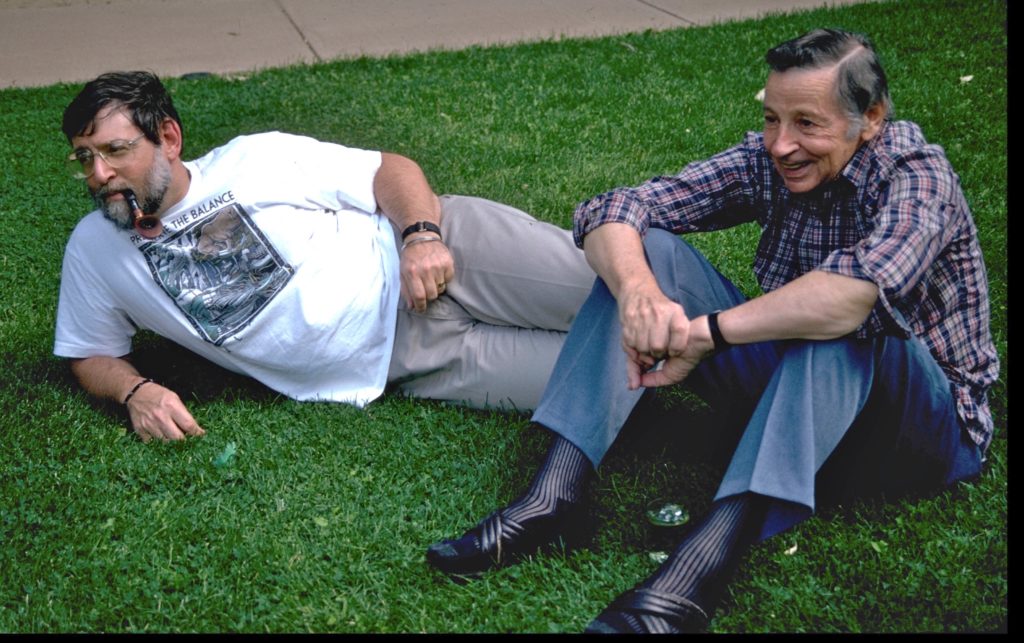
When both of my parents had died, my mother Esty at the age of 90 and father Sam at the age of 93 1/2, we kept some old papers of theirs we had discovered and put them in a file we labeled as “Memorabilia.”
Yesterday, as Ellen and I were going through and discarding some of the huge amount ‘stuff’ we have stuck into various draws, cabinets, and boxes, I came across something my father had written that we had found and saved. I’m not sure of the date he wrote it, but it was sometime when our two daughters were quite young; so he wrote it at least 30-35 years ago and left it in the back of a drawer in our Orlando home. I don’t remember seeing it while he was alive.
I thought it could have interest for family and friends, not only for how important it is for me personally but perhaps also for others in these difficult days.
Richard & I
The letter with the familiar Sierra Leone postmark came towards the end of his first Peace Corps year. Chatty and whimsical in his usual way, it ended with the startling suggestion – “Sam, you always came to camp on visitor’s day at Samoset – why not now and here? It is probably a rough trip for Esty, but she deserves a separate vacation. Come – we will talk, you will see my segment of Africa, and your citrus will grow even in your absence.”
And so I did. From Orlando to New York to Freetown and then, the toughest part by mammy wagon, to Kailahun. I arrived in the late afternoon, unannounced, to flounder to the rather primitive dwelling my son shared with another Peace Corps idealist. A note on the door suggesting, that since my arrival was indeterminate, I find my way to the school, where Richard and faculty were building an imposing addition.
“You must be Meestah Meeler’s father,” a young voice piped behind me. “And how do you know that?” “You walk like Meestah Meeler.” I curbed the impulse to say, “You’ve got it backwards, kid,” and contemplated a truth revealed. I did walk like my son. Our role reversal was beginning. Here, on turf alien to me, he had established an identify all his own, independent and unconnected by any umbilical chord.
Pure pleasure to be with him – his obvious love and joy at the reunion matching mine. After the ground nut stew supper and news catching up, he said, “”Let’s talk about Ellen,” and we did. She was finishing college during his Peace Corps stint, and Esty and I had recently driven to New Jersey to vist and spread around some parental blessing. A lovely girl, our son had chosen, and we talked late of plans and marriage and the difficulty of separation.
The village chief, with a gesture of hand to breast, gifted me with a robe of country cloth. His praise singer informed me that the gift and gesture were unusual – the hand motion indicating he took me to his heart. Not that he truly knew my inestimable worth, but an indication of the community regard for my son.
Maybe the child is father to the man. Of course, it is warming to know that one’s flesh and blood has his own strong and sure identity, yet there is an ambivalence. The years had rushed by and regrets coursed through of missed words, missed chances, and missed touches.
Two days before his sixteenth (the legal driving age in Florida), Richard, his grandfather (Rob), and I went to Reed Motors in downtown Orlando. He had saved his bar-mitzvah gelt, his money from his two summer labors with an idiot stick in the groves, and our modest additions to bring it to a grand total of eighteen hundred dollars.
The Monza on the lot was his heart’s desire. Color, line, sleekness — all exactly right. The best deal was an even two thousand dollars. Rob started to reach into his pocket when callous, arrogant me caught his arm and told the man if he could find a way to accept our eighteen hundred dollars, call us at home at this number. Richard, with a slight lip termor, nodded at me and we walked away,
If I could only relive that day and save my good son that two hour agony until the call came saying it was ours
When he was nine or ten, with Jimbo, he built a tree house in the big oak fronting our Florida house. I came home tired and hot from the packing house and grove to face the small problem. I had visions of fifteen foot falls, hurts, law suits, and assorted ills. Balancing his enthusiasm while understanding my problem, we discussed it fairly amicably. At his suggestion, we resolved it thusly. I would climb into the tree house and if after stomping, banging and shaking , it survived. I would withdraw my objections. To my mild consternation, that solidly built hut withstood my assault. He was gracious in triumph and exercised care and prudence in maintaining security.
And he returned, after the two years, from Africa – bearded and some how bigger – to get a doctorate and start teaching at Kennedy High School in Washington, a rather unorthodox and free wheeling, open sort of school. On one of intermittent visits to DC to visit Richard and Ellen, now safely married, he suggested I spend a day at school. Seated in the rear, trying to be unobtrusive, I was bemused by the freedom and interplay betwixt student and teacher — a far cry from my high school experience.
Halfway through the first hour Richard announced, “we have a visitor.You have heard me mention my father; well he is that guilty party sitting in the back. You want to pump him. All I will add is that he thinks I am somewhat square and he will be honest with you.”
After about thirty seconds, the kids started firing, “How did your relationship come? Did we talk about sex? Why did I think him square? What was Esty like? How come we let him go to India on the Experiment in International Living when he was in his teens?”
The whole tenor of the hour left me with a sense that these adolescents hungered for communication with their parents that generally was non-existent; and a profound sense of gratitude at what we had.
With some of the faculty at Kennedy, Richard started a program for emotionally disturbed teenagers that came to be known as The Frost School. One of the teaching techniques involved the use of a video camera. On various holidays and family visits, Ellen borrowed the unit and video taped — a nice way to enfold us into their lives and keep us abreast of Annie, now seven, and Beth now three.
The last tape depicts Beth on my bearded son’s lap gravely discussing her day. “You went to the doctor with mommy?” Vigorous nodding of the head. “Why? “My ear hurt.” “What did the doctor do?” Indignantly, “He put a stick in my mouth.” “What?” “Yes he did.” “If your ear hurt, why would he do such a silly thing?” Giggle, “I don’t know.”
Why my sudden ache and nostalgia to have my forty-two year old an infant in my lap and to gravely joke with him as he is now with Beth? Is there ever enough? What I would give for one more day — to ride the groves, to talk of my day and his day; of what he and Jimbo fell out about — the Little League prospects and maybe girls; and I would try not to hug him too tightly.
Ah, the magic clock. We have four grandchildren, the two girls in Washington and two older grandsons, courtesy of Richard’s slight older sister, Janet. (I suspect that he thinks I am soft in the head as well as heart about my first born.) Why then, the fantasy of turning back the clock and longing for one more day? “Dote” is the hackneyed accurate word re the grand children; and our relationship with our children strikes me as rare. They embrace us and include us in their lives. Filial piety, in the Chinese sense, is rendered in full measure. But I want one more day.
If, like Sisyphus, it were granted by the Gods, I would merit the same punishment and receive the deserved doom There is never enough.
19 Tuesday May 2020
Posted in Escapes and Pleasures
Tags
1918 Spanish Flu, book, COVID-19, Lawrence Wright, Newly released thriller, novel, Pandemics, Puliter Prize winner, The Looming Tower: Al-Qaeda and the Road to 9/11
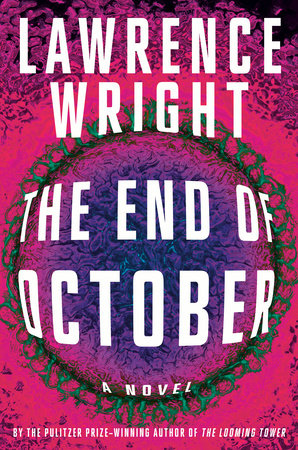
I was going to wait a couple of weeks until I posted a June 2020 list of Books Most Recently Enjoyed by MillersTime readers, but since I have some free time and want to write more than three sentences (the limit for the next list posting), I want to draw your attention to Lawrence Wright’s just published The End of October.
You may recognize the author’s name as he writes for the New Yorker magazine and in 2007 won a Pulitzer Prize for general nonfiction for his book The Looming Tower: Al-Qaeda and the Road to 9/11. He’s written four other books, a script for Oliver Stone’s movie Noriega: God’s Favorite, and co-wrote a screen play, among other activities. Although The End of October was released at the end April of this year, Wright finished the writing of the book well before the current COVID-19 virus appeared in China, around the world, and in the US. It is his first novel as he has been primarily known for his nonfiction works.
It is riveting, entertaining, sobering, and filled with information about the science and history of earlier pandemics wound around the fictional story of a CDC scientist/doctor and his family and a novel pandemic (not COVID-19 but eerily similar and much more dangerous) that threatens the world.
Wright has done his research, after all he’s primarily been a nonfiction writer, and that’s what makes The End of October so rich and so frightening. Plus, Wright understands much about the world in which we live, its politics – domestic and international — its religions, the hopes and fears of all of us. He mixes the strong narrative and its characters with scientific facts. It’s written like a mystery: the pace of the book is literally heart-throbbing, and it doesn’t let up. (I listened to it, all 13+ hours) while walking on the treadmill, usually extending myself at least a couple miles beyond what I intended.)
I loved and admired the main character, built on an relatively unknown, or forgotten, British epidemiologist of the late 1800s and early 1900s. And I got caught up in the numerous plots and twists and turns of Wright’s story.
It is not a flawless novel by any means, but the reader can’t help but be amazed at how Wright has so accurately been able to foresee so much of what has been occurring over the last three to four months in this country and in the world. He has insisted he did not write The End of October as a cautionary tale but that he looked at the history of pandemics (particularly, but not only, the 1918 Spanish Flu), used what scientists and doctors told him, and added stress and his imagination to a story of an initially contained outbreak of what he termed the Congoli virus.
The result is 400 pages of reading or 13 hours and 26 minutes of listening to a story that mixes fiction and nonfiction in a book you will not forget.
18 Monday May 2020
Posted in Articles & Books of Interest

A former colleague of Ellen’s sent this to her this morning, and Ellen sent it on to me. It’s a straight forward, up to date summary of how Dr. James Stein, cardiologist based at U-Wisconsin at Madison, sees where we are as parts of the country relax restrictions and how we individually can think about our personal decisions:
COVID-19 Update as We Start to Leave Our Cocoons
The purpose of this post is to provide a perspective on the intense but expected anxiety so many people are experiencing as they prepare to leave the shelter of their homes. My opinions are not those of my employers and are not meant to invalidate anyone else’s – they simply are my perspective on managing risk.
Key point #1: The COVID-19 we are facing now is the same disease it was 2 months ago. The “shelter at home” orders were the right step from a public health standpoint to make sure we flattened the curve and didn’t overrun the health care system which would have led to excess preventable deaths. It also bought us time to learn about the disease’s dynamics, preventive measures, and best treatment strategies – and we did.
For hospitalized patients, we have learned to avoid early intubation, to use prone ventilation, and that remdesivir probably reduces time to recovery. We have learned how to best use and preserve PPE. We also know that several therapies suggested early on probably don’t do much and may even cause harm (ie, azithromycin, chloroquine, hydroxychloroquine, lopinavir/ritonavir). But all of our social distancing did not change the disease.
Take home: We flattened the curve and with it our economy and psyches, but the disease itself is still here.
Key point #2: COVID-19 is more deadly than seasonal influenza (about 5-10x so), but not nearly as deadly as Ebola, Rabies, or Marburg Hemorrhagic Fever where 25-90% of people who get infected die. COVID-19’s case fatality rate is about 0.8-1.5% overall, but much higher if you are 60-69 years old (3-4%), 70-79 years old (7-9%), and especially so if you are over 80 years old (CFR 13-17%). It is much lower if you are under 50 years old (<0.6%). The infection fatality rate is about half of these numbers.
Take home: COVID-19 is dangerous, but the vast majority of people who get it, survive it. About 15% of people get very ill and could stay ill for a long time. We are going to be dealing with it for a long time.
Key point #3: SARS-CoV-2 is very contagious, but not as contagious as Measles, Mumps, or even certain strains of pandemic Influenza. It is spread by respiratory droplets and aerosols, not food and incidental contact.
Take home: social distancing, not touching our faces, and good hand hygiene are the key weapons to stop the spread. Masks could make a difference, too, especially in public places where people congregate. Incidental contact is not really an issue, nor is food.
What does this all mean as we return to work and public life? COVID-19 is not going away anytime soon. It may not go away for a year or two and may not be eradicated for many years, so we have to learn to live with it and do what we can to mitigate (reduce) risk. That means being willing to accept *some* level of risk to live our lives as we desire. I can’t decide that level of risk for you – only you can make that decision. There are few certainties in pandemic risk management other than that fact that some people will die, some people in low risk groups will die, and some people in high risk groups will survive. It’s about probability.
Here is some guidance – my point of view, not judging yours:
1. People over 60 years old are at higher risk of severe disease – people over 70 years old, even more so. They should be willing to tolerate less risk than people under 50 years old and should be extra careful. Some chronic diseases like heart disease and COPD increase risk, but it is not clear if other diseases like obesity, asthma, immune disorders, etc. increase risk appreciably. It looks like asthma and inflammatory bowel disease might not be as high risk as we thought, but we are not sure – their risks might be too small to pick up, or they might be associated with things that put them at higher risk.
People over 60-70 years old probably should continue to be very vigilant about limiting exposures if they can. However, not seeing family – especially children and grandchildren – can take a serious emotional toll, so I encourage people to be creative and flexible. For example, in-person visits are not crazy – consider one, especially if you have been isolated and have no symptoms. They are especially safe in the early days after restrictions are lifted in places like Madison or parts of major cities where there is very little community transmission. Families can decide how much mingling they are comfortable with – if they want to hug and eat together, distance together with masks, or just stay apart and continue using video-conferencing and the telephone to stay in contact. If you choose to intermingle, remember to practice good hand hygiene, don’t share plates/forks/spoons/cups, don’t share towels, and don’t sleep together.
2. Social distancing, not touching your face, and washing/sanitizing your hands are the key prevention interventions. They are vastly more important than anything else you do. Wearing a fabric mask is a good idea in crowded public place like a grocery store or public transportation, but you absolutely must distance, practice good hand hygiene, and don’t touch your face. Wearing gloves is not helpful (the virus does not get in through the skin) and may increase your risk because you likely won’t washing or sanitize your hands when they are on, you will drop things, and touch your face.
3. Be a good citizen. If you think you might be sick, stay home. If you are going to cough or sneeze, turn away from people, block it, and sanitize your hands immediately after.
4. Use common sense. Dial down the anxiety. If you are out taking a walk and someone walks past you, that brief (near) contact is so low risk that it doesn’t make sense to get scared. Smile at them as they approach, turn your head away as they pass, move on. The smile will be more therapeutic than the passing is dangerous. Similarly, if someone bumps into you at the grocery store or reaches past you for a loaf of bread, don’t stress – it is a very low risk encounter- as long as they didn’t cough in your face (one reason we wear cloth masks in public!).
5. Use common sense, part II. Dial down the obsessiveness. There really is no reason to go crazy sanitizing items that come into your house from outside, like groceries and packages. For it to be a risk, the delivery person would need to be infectious, cough or sneeze some droplets on your package, you touch the droplet, then touch your face, and then it invades your respiratory epithelium. There would need to be enough viral load and the virions would need to survive long enough for you to get infected. It could happen, but it’s pretty unlikely. If you want to have a staging station for 1-2 days before you put things away, sure, no problem. You also can simply wipe things off before they come in to your house – that is fine is fine too. For an isolated family, it makes no sense to obsessively wipe down every surface every day (or several times a day). Door knobs, toilet handles, commonly trafficked light switches could get a wipe off each day, but it takes a lot of time and emotional energy to do all those things and they have marginal benefits. We don’t need to create a sterile operating room-like living space. Compared to keeping your hands out of your mouth, good hand hygiene, and cleaning food before serving it, these behaviors might be more maladaptive than protective.
6. There are few absolutes, so please get comfortable accepting some calculated risks, otherwise you might be isolating yourself for a really, really long time. Figure out how you can be in public and interact with people without fear.
We are social creatures. We need each other. We will survive with and because of each other. Social distancing just means that we connect differently. Being afraid makes us contract and shut each other out. I hope we can fill that space created by fear and contraction with meaningful connections and learn to be less afraid of each of other.
We are social creatures. We need each other. We will survive with and because of each other. Social distancing just means that we connect differently. Being afraid makes us contract and shut each other out. I hope we can fill that space created by fear and contraction with meaningful connections and learn to be less afraid of each of other.
17 Sunday May 2020
Posted in Escapes and Pleasures

Two months ago now I asked for MillersTime readers to send in a favorite read that you had since the beginning of 2020 (and a favorite listen if you listen to books on tape/audible). Thirty-seven of you responded, and the result was Favorite Reads in Time of Self-Isolation, April 2020.
Now let’s do that again.
Please follow these few instructions as it makes my job of compiling the list easier. If you only have one book or one listen, that’s fine too.
14 Thursday May 2020
Posted in Articles & Books of Interest, The Outer Loop
Tags
"The Atlantic", 2020 Elections, Franklin Foer, Interference in Our Elections, Russia, Russian Interference in Our Elections
While I’ve cut back on how much time I am spending reading various articles, posts, news reports, and time spent on social media, tweets, etc. (Facebook is a thing of the past for me now), I continue to follow what for me are a few reliable sources of information.
In that vein, I came across something two days ago that I think is worthy of your time and consideration. It’s from The Atlantic magazine’s upcoming June 2020 publication, written by Franklin Foer, a staff writer for The Atlantic and the former editor of The New Republic. He clearly writes from a liberal perspective. Nevertheless, what he has to tell us in this somewhat lengthy article contains new and detailed information about the situation facing us vis-a-vis Russian interference in our elections, his view that it is going to happen again, and our lack of preparedness for it.
This article goes beyond anything I’ve read on this subject to date, and I hope you will spend the time to consider what he has uncovered and wants us to know:
The 2016 Election Was Just a Dry Run, by Franklin Foer, The Atlantic, June 2020
As always, I am open to your reactions, whether you agree or disagree. Use the Comment section of this post to let me and others know your reaction to what for me is a very disturbing account of where we are headed for the upcoming elections.
12 Tuesday May 2020
Posted in Escapes and Pleasures, Go Sox
Tags
baseball, Baseball without fans, MLB, The Imprtance of Sports in Our LIves, The Role of Baseball in Our Lives, The Role of Sports in Our Lives, YouTube
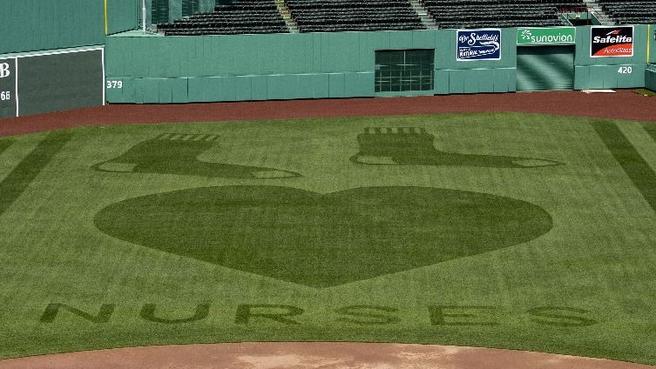
With news yesterday and probably more details later today, it appears there maybe a baseball season consisting of 82 games starting in July. There are details remaining to work out, including the two biggest issues of finances for both the MLB owners and the players as well as safety concerns for the players and those who will participate in the shortened season.
At least at the beginning, there will be no fans present.
Baseball without fans?
Seriously?
Yes.
It’s happening in Korea now, since their season opened about a week ago, without fans in the stadium. (It also happened once previously, for one game in Baltimore in 2015, for a game between the Orioles and the White Sox.)
And while it’s too early to really evaluate how significant the absence of spectators in the stadium is affecting the game in Korea, it’s clear that things are not the same.
Time will tell if this substitute for the real thing is safe, is satisfying, is something that helps everyone in these troubled times.
All of this, the absence of one of my life’s obsessions, baseball, and the role of sports in the lives of people everywhere, but in this instance particularly in our country is ‘explored in the two links below: one a 4:29 minute YouTube video of President Bush throwing out the opening pitch of game three in the World Series at Yankee Stadium on Oct. 30th, following 9/11 (hat/tip to Jere Smith for the update on this) and one a recent article in the NYTimes entitled The Healing Power of Baseball by Franklin Zimmerman, M.D. (hat/tip to Harry Siler for alerting me to this article).
And now read: The Healing Power of Baseball by Franklin H. Zimmerman M,D.
Check both of them out, and I’d love to hear what you think about any aspect of the importance of sports for yourself and for our society.
09 Saturday May 2020
Posted in Escapes and Pleasures
Tags
"Atlantics", "Babies", "Bad Education, "Honeyland", "Luce", "Motherless Brooklyn", "Richard Jewell", "Self-Made: The Enduring Legacy of Madam CJ Walker", "Sneakers", "Spenser Confidential", Amazon Prime, Ellen Miller, Films, Movies, Netflix, Never Rarely Sometimes Always""
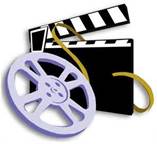
Or
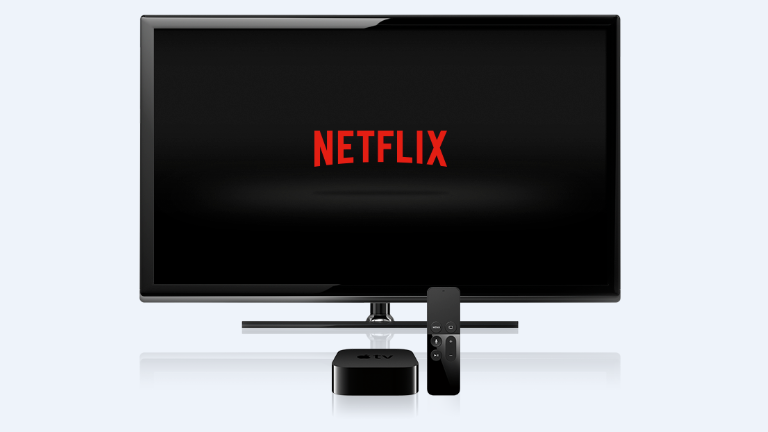
by Ellen Miller
We’ve seen an incredible mix of films in the seven plus weeks while under quarantine, not withstanding the challenges of learning how to use our new very smart TV — clearly smarter than we are. If it wasn’t for our son-in-law’s two socially distanced visits and frequent phone consultations, there were be no movie reviews.
I do not like watching movies at home. I want someone else to curate them for me; I want a movie theater that smells of popcorn (even if I am not eating any); I want other people in a theater along side me and that feeling of community when you enter or exit a theater knowing that you might see or just saw something exciting, interesting, or provocative; I want a screen 20 times larger than me so I will literally be engulfed by the story; I want movies to provoke or educate me, not just mindlessly entertain me; I don’t want to fool with making the technology work. And from what we’ve seen thus far, the made-for-TV-movies are no match for films produced by studios (even if some high profile actors have roles).
That said, we have seen a number of films that we do recommend, which we rated four or five stars. Only a few of them would have held me in a traditional movie theater, but since that is not an option, below are some we’ve enjoyed. (We have also included a guest review of one TV series from our good friend FMH that we will take to heart.)
We are going to list at the bottom a few films that we didn’t like enough or didn’t watch all the way through to help you avoid them. (I think for all of them, they were simply “too dark” for these times.) Most of these we recommend can help you happily wile away a few hours. Note: All the films came out in the last year or two (or more recently) unless noted otherwise.
Luce (2019 – Amazon Prime):
Ellen **** Richard ****
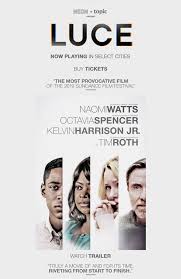
This is an imperfect but very interesting recent film. A liberal white family (played by Naomi Watts and Tim Roth) has adopted a (then) 7-year-old former Eritrean child soldier, and raises him in Arlington, Virginia. We meet Luce (played wonderfully by Kelvin Harrison Jr.) in his senior year in high school – a star debater, overall student, and favorite of everyone at his school. The plot begins to thicken when Luce is challenged about what appears to be dangerous political beliefs. His African-American History teacher (played by Olivia Spencer) confronts the parents with what she believes is a serious concern. Plot twists ensue. As the parents try to figure out just who their son really is, the film gets even more complex with new evidence added to further explore his character. The film raises a number of interesting questions pertaining to race, adoption, parenting, and living up to expectations.
(Note from Richard: If there are a half a dozen or so of you who would be interested in a Zoom discussion after seeing Luce, let me know. I think there are issues raised and enough to explore in the film that would make for a ‘virtual movie club’ discussion.)
Atlantics (2019 – Netflix):
Ellen **** Richard ***
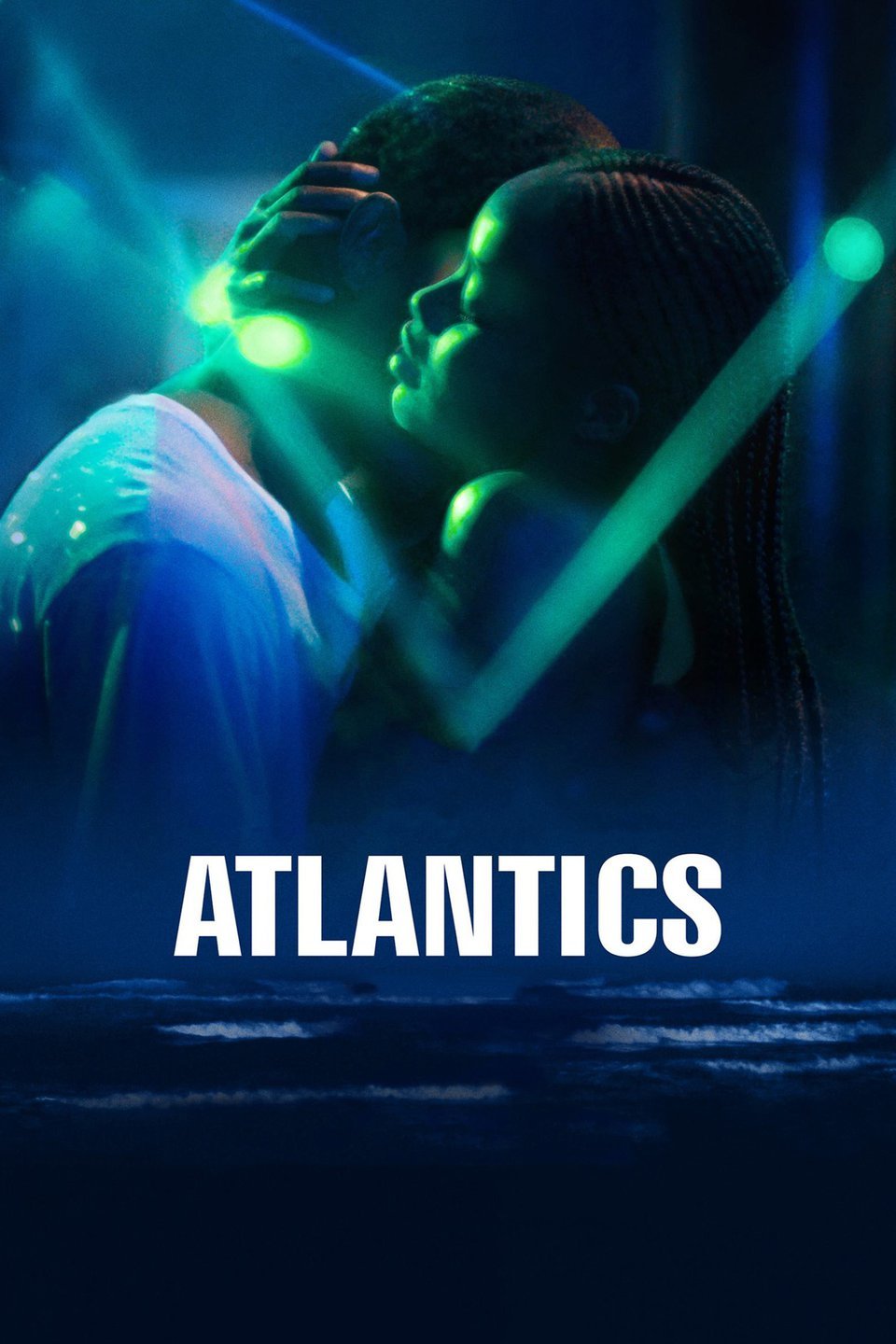
This is what we used to call an “art film.” It is a film that critics love and the audience not so much. We appreciated its story and its art, but it’s probably not for everyone. The story is a classic: a forbidden romance, a threatened labor strike, immigration heartbreak, and a mix with mysticism (including shape-shifting characters), set in Dakar, Senegal. The setting is an exotic diversion. With a little post viewing conversation, we figured it out.
Never Rarely Sometimes Always (2020 Amazon Prime):
Ellen ***** Richard ****
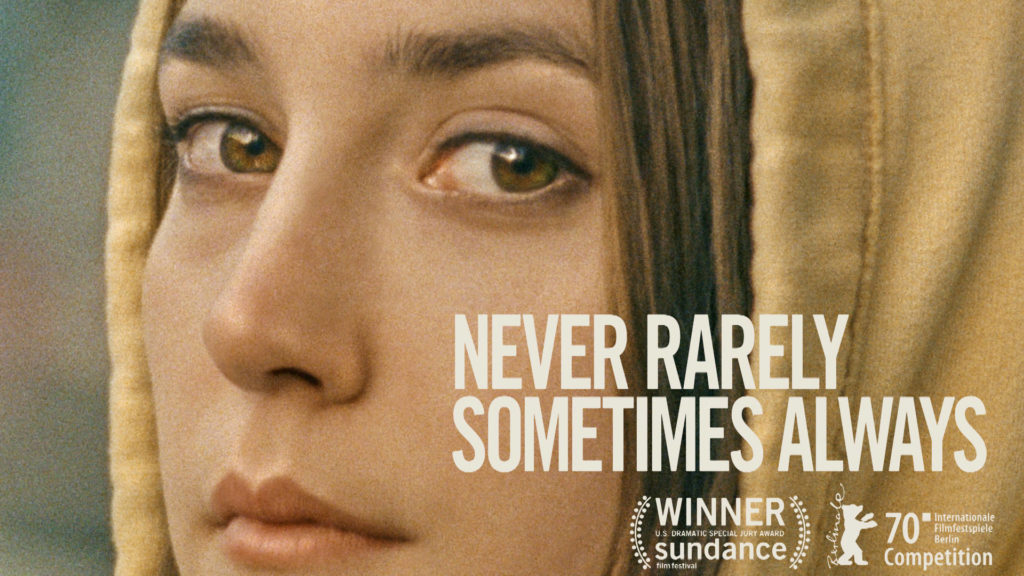
This is not a film I would recommend to everyone (remember my recommendation for Parasite?), but it’s an important one and should be more widely seen than it will be. Be prepared for an emotional 95 minutes of an extraordinarily intimate story of a 17-year-old girl who discovers an unwanted pregnancy. You will watch uncomfortably as she and her cousin travel out of their rural Pennsylvania town to New York to seek an abortion. The films rings true of the upset, confusion, and worry this teenager feels. At times I thought I was watching a documentary, deepening that feeling is the film’s painfully slow-pace.
The film was released March 13 and has been wildly heralded by the critics. The lead character, Autumn, is played by Sidney Flanigan, and her cousin, Skylar ,is played by Talia Ryder. Both are superb. The Director is Eliza Hittman. The Wall Street Journal called it “a film that has to be seen.” The New York Times said it was “a low-key knockout.”
This movie is not relief from the pandemic, so you might want to save it for later. And, as Richard wisely said about it, “If you’re looking for ‘entertainment,’ this film is not for you.”
Richard Jewell (2019 – Amazon Prime):
Ellen ***** Richard ****
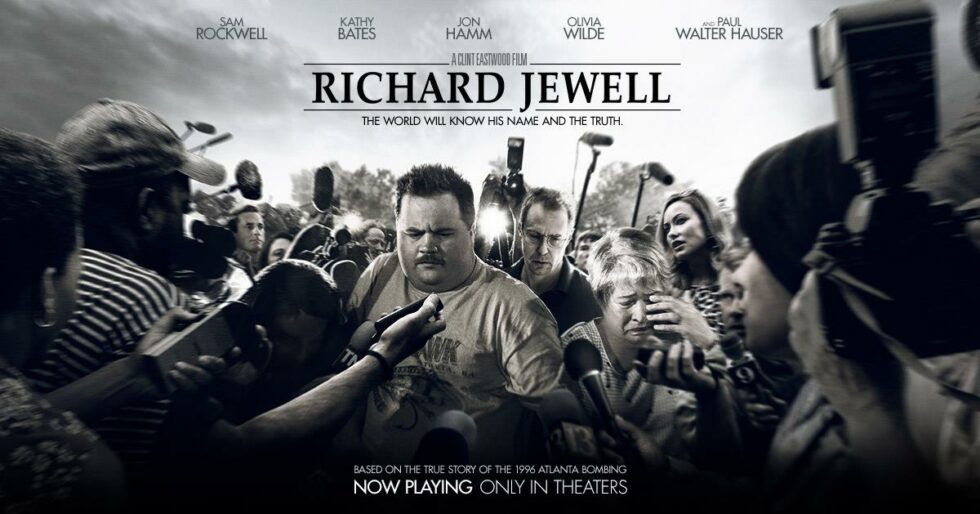
Let’s start with the fact that this is a Clint Eastwood film. We like his films. We find them edgy, political, tightly directed, and engaging — and this one is not an exception. You probably remember this story: During the 1996 Summer Olympics in Atlanta a bomb exploded in Atlanta’s Centennial Olympic, killing two, injuring 100. A security guard, Richard Jewell, appears to have been a hero that day, discovering the bomb, helping to evacuate the area. Then the FBI names him the prime suspect in the bombing and the movie begins. It’s very engaging.
Richard: “On the advice CT, I saw this before I read the book – The Suspect: An Olympic Bombing, the FBI, the Media, and Richard Jewell, the Man Caught in the Middle by Kent Alexander, Kevin Salwen (NF). I liked the book even more than the film.
Motherless Brooklyn (2019 Amazon Prime):
Ellen **** Richard ****

Our good friend DP recommended this film, and we really enjoyed it. (As DP said in an email, “I love any movies about Brooklyn, but in spite of that prejudice, I think you’ll like this one too.” We trust her movie judgment after some 45+ years of knowing each other.)
The vaguely “Noir-ish” movie is set in 1957 in New York and focuses on the “bad guy” culture. A struggling private investigator (Lionel, played by Edward Norton, who directed and produced the film) decides that he and his compatriots must solve the murder of their boss (Frank Mina, played by Bruce Willis) after a rival monstrously killed him for unknown reasons. (Mina was a nice guy and made his mark on those he hired; in fact, he had rescued some of them from orphanages and trained them as private investigators.) Alec Baldwin plays a developer — Moses Randolph — a character loosely based on Robert Moses. The film unfurls issues of development in the city, tension between the white real estate speculators and the African-American home owners. The plot is suspenseful with a number of surprises. This movie has just about everything I think makes a good movie: great acting, great production, engaging and a provocative subject. Audiences have liked it more than critics.
Honeyland (2019 – Amazon Prime):
Ellen **** Richard *****
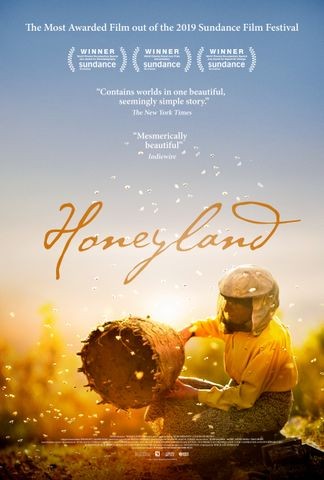
This is an extraordinarily beautifully produced documentary about a woman – a beekeeper — who lives in a very remote location with her aging mother in Macadonia. It is directed Ljubomir Stefanov and Tamara Kotevska, and focuses on the life and labors of this one woman. In an extraordinary effort, the filmmakers spent three years with Hatidze; her mother, Nazife; and the late-arriving people next door. There is very little dialogue, and the film is large impressionistic and has the most amazing photography.
AO Scott of NYT wrote: “The opening minutes of Honeyland are as astonishing — as sublime and strange and full of human and natural beauty — as anything I’ve ever seen in a movie.” This was a film that we didn’t have a chance to at last Fall’s Philadelphia Film Festival, and it’s worth seeing on your TV screen.
Richard: Superb Cinematography
Sneakers (1992 – Amazon Prime Video, Vudu, You Tube):
Ellen **** Richard ****
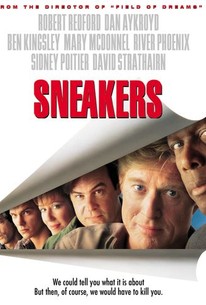
I am not much of a fan of watching “old movies,” but I found this very entertaining. First of all, I think it was one of the early big “heist movies” (e.g., a bunch of cool guys develop an elaborate plan to steal something from a bunch of bad guys). And for this movie it’s really about those cool guys: It stars Robert Redford, Sidney Poitier, Ben Kingsley, Dan Aykroyd, and David Strathairn as members of a San Francisco-based counter security firm who find out about a device that can decode government secret messages. It’s got all the razzle-dazzle you’d expect, twists and turns, wondering who are the bad guys, who are the good guys. It’s just two hours of fun.
Richard: Good Escapist Film.
Babies (2010 – Amazon Prime, Hulu Starz):
Ellen: ***** Richard ****
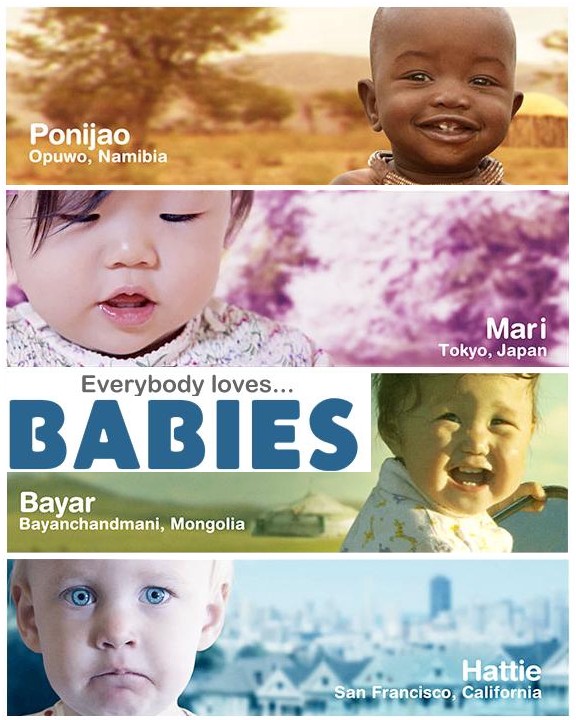
I did not see this film when it first came out 10 years go and was delighted to find it online. This is a French documentary, looking at four babies born and raised (until the age of two) in different parts of the world. It is equal parts charming and adorable, allowing the viewer to examine how each of these children thrive in their own environment. For those who are at loss for lack of travel in these times, the film will take you to distant corners of the earth to meet Bayar in Mongolia; Ponjiao in Namibia; Mari in Tokyo; and Hattie in San Francisco. This film is perfect relief from the pandemic.
Richard: Five stars the first time I saw it, not quite so enthralled on this second viewing.
Self-Made: The Enduring Legacy of Madam CJ Walker (2020 – Netflix Series):
Review by FH:
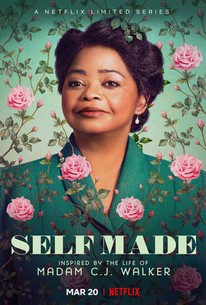
Madam CJ Walker was America’s first self-made woman millionaire. She was a black washerwoman, born in 1867 just after the Civil War, who became an entrepreneur, philanthropist, and social activist. This four-part Netflix series is based on a book by her great-great granddaughter.
It’s an amazing story of someone who had a dream and perseverance and a belief that making money should be for profit and “to help your neighbor.” In her case, helping her neighbor meant bringing dignity and options to black women’s lives. She did this by creating a beauty product for hair that was sold door-to-door by women “sales agents” and in hundreds of salons across the country. She opened a factory and met with investors in an era when women, let alone a Black woman, did not do that. She promoted a standard of beauty, she said, that was not the beauty of the “Gibson girl”, but the beauty of “women that look like me.” Her daughter opened the salon in New York City and was a figure in the Harlem Renaissance.
With Octavia Spencer (The Help, Hidden Figures) as Madam CJ Walker, supported by a great cast, this is a film worth seeing and reflecting on.
PS: Skip these two:
Bad Education (2019). This was the oddest movie we’ve seen in a long time. It got a very solid review from The New York Times. It’s based on a real story of corruption in a Long Island public school system. It has two big stars – Hugh Jackman and Allison Janney, but the acting was wooden, the production was beyond boring, and it had both the look and feel of a movie made by a high school class in their backyard. Two questions arise: why would Jackman and Janney agree to be in such a movie; is this reflective of the quality of all HBO movies? Skip it.
Spenser Confidential (2020). This is a Boston-based police corruption “action comedy.” We saw no humor and way too much blood.